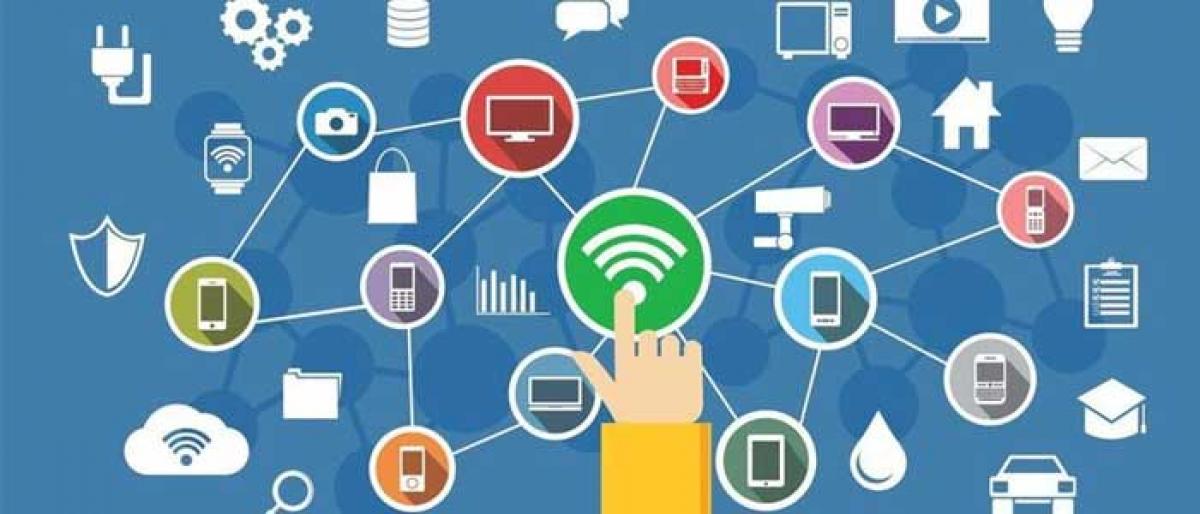Live
- Narrow roads lead to frequent traffic jams in Kurnool
- Bengal bypolls: TMC leading in all six seats after 2nd round of counting
- Stimulating NREM sleep can boost cognitive function, memory
- EO releases TTD employees’ cricket team Jersey
- Priyanka Gandhi leads by 90,000 votes in Wayanad, Cong edges out BJP in Palakkad Assembly seat
- US CDC confirms H5N1 bird flu infection in child in California
- Dispose dump yard garbage in 3 months: TTD EO
- Gold rates in Vijayawada today surges, check the rates on 23 November, 2024
- Gold rates in Hyderabad today surges, check the rates on 23 November, 2024
- Punjab bypolls: Counting of votes begins for four Assembly seats
Just In

IoT is the inter-networking of physical objects which enable them to interact with each other through the internet. It describes a world where just about anything can be connected to communicate with each other. According to industry analysts, it is estimated that around 40-50 billion devices will be wirelessly connected to IoT within next few years.
IoT is the inter-networking of physical objects which enable them to interact with each other through the internet. It describes a world where just about anything can be connected to communicate with each other. According to industry analysts, it is estimated that around 40-50 billion devices will be wirelessly connected to IoT within next few years.
This emerging technology has wide applications in almost every industry sector like transportation, energy, environment, healthcare, manufacturing, agriculture, infrastructure, media etc. With the use of IoT, the physical world is fast becoming an information ecosystem which will create opportunities for direct integration of the physical world into computer-based systems and result in improved efficiency, accuracy and economic benefits.
It will help collect useful data with the help of various technologies and then autonomously share the data among other devices. A small real life example in today’s context is the home automation systems which controls lighting, heating, air conditioning and even extend to utility appliances such as washer, dryer, vacuum, refrigerator etc. that can be connected through the internet.
Therefore, IoT is expected to process and store large volume of data which will be passed back and forth through connected devices which leaves a door wide open for privacy and security risks and single point vulnerability of multiple systems.
According to the expert, numerous concerns have already been raised around the security challenges involved in this complex technology. Most of the technical security risks are similar to those of conventional technology, but the security controls used for the conventional technology are not applicable to most of the IoT devices because of the varied technical nature of these devices.
One weak link in the security chain can provide bad actors with nearly limitless doorways that can potentially be breached and lead to personal data. Beyond the data privacy risks, cyber security risks like control of systems used in homes, vehicles, hospitals etc. taken by bad actors etc. can have serious consequences.
Therefore, efforts are currently underway to build strong security framework which can be embedded in this technology supplemented by raising awareness among users as humans are considered to be the weakest security link. Every new technology comes with a new set of risks and threats and IoT is no different.
The need is to address the growing security and privacy concerns appropriately before this technology is adopted broadly. Both industry and users need to raise their awareness level and work together to embrace it as a secure technology by not doing a blind eye to the evolving risks.
By: Varun Vohra

© 2024 Hyderabad Media House Limited/The Hans India. All rights reserved. Powered by hocalwire.com







